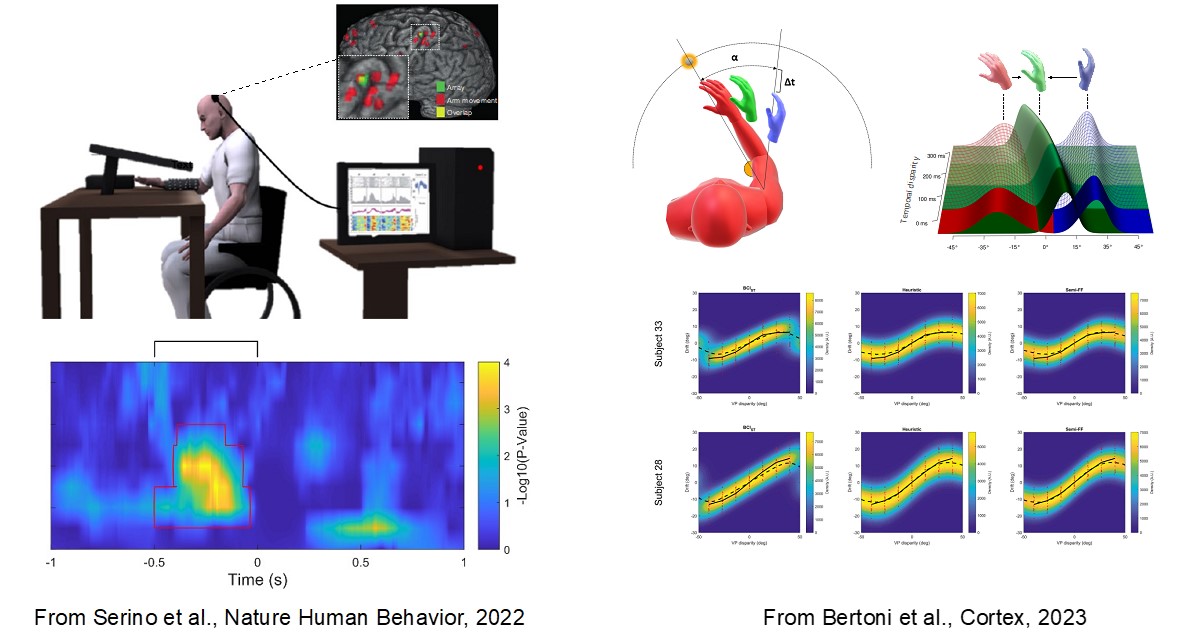Research axes
1. Multisensory-motor mechanisms of consciousness

In this line of research, we investigate how multisensory and motor signals are processed and integrated within peripersonal space, how they affect perception and cognition, and how they are modulated by the level of consciousness (e.g. awake, sleep & coma). The techniques mainly employed are psychophysics, brain-computer interfaces via EEG, virtual reality and computational modeling. The populations studied are primarily healthy participants and comatose patients.
Experts & collaborators
Internal collaborators
- Tommaso Bertoni
External collaborators
- Cristina Becchio (Politechnico Torino)
- Francesca Siclari
- Ali Rezai (West Virginia University)
Funding
- SNSF (https://www.snf.ch)
- EU Marie Sklodowska-Curie Fellowship / The MINDED Programme
- (https://minded-cofund.eu/about-us/minded-and-marie-sklodowska-curie-action)
Selected publications
2. Neural representations of the body

In this line of research, we investigate somato-motor, visual, and nociceptive neural representations pertaining to the body, and how these interact with peripersonal space representations as well as higher-order experiential phenomena and cognitive processes such as the body ownership, agency, memory and decision-making. The primary tools used in this line of research are high-field functional MRI, MR-compatible robotics, virtual reality and advanced imaging analysis techniques based on machine learning. The populations studied are primarily healthy participants, amputees, stroke patients and patients suffering from chronic pain (phantom limb pain & complex regional pain syndrome.
Experts & collaborators
Internal collaborators
- Michel Akselrod
External collaborators
- Jozina de Graaf (Université Aix-Marseille)
- Jean Paysant (IRR Nancy)
Funding
- SNSF (https://www.snf.ch)
- Fondation A*MIDEX (https://www.univ-amu.fr/fr/public/la-fondation-amidex)



